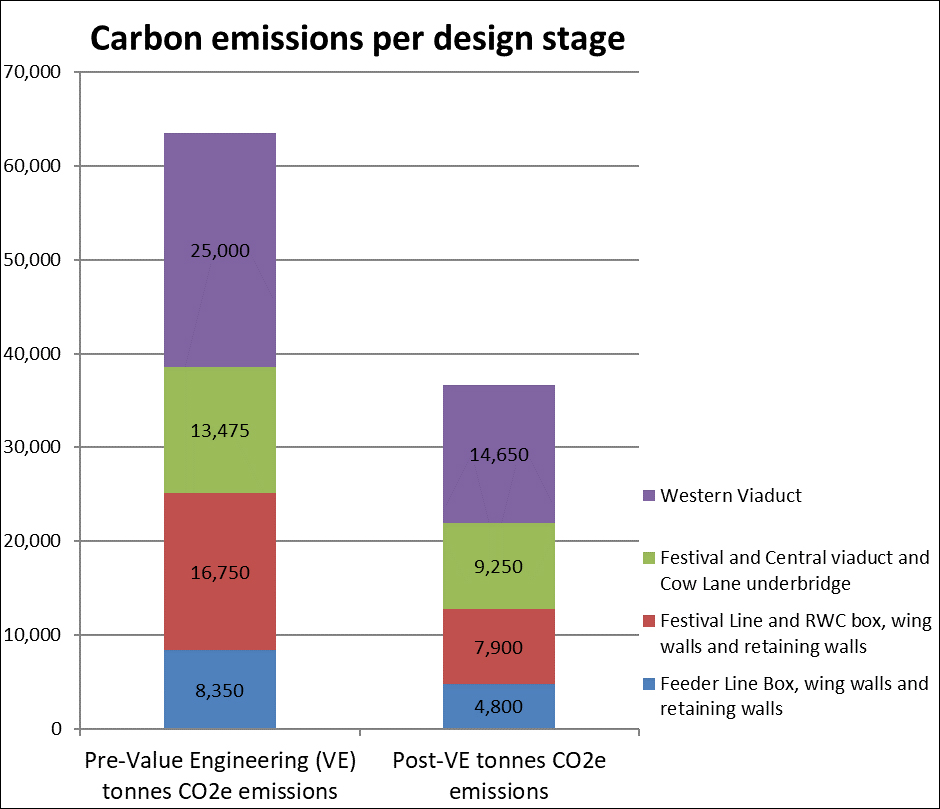Case study: Reading Elevated Railway Value Engineering
Company – Network Rail, Balfour Beatty, Bechtel and Atkins
What’s the issue being addressed?
Reading is one of Britain’s busiest stations, handling 14 million passengers every year and over 700 trains every day. To improve capacity at the station and surrounding rail networks, the Reading Elevated Railway was constructed which removed a significant bottleneck on the network. During the construction phase the principal contactor was challenged to propose cost and carbon-saving options to reduce the capital cost of the scheme.
How was this solved?
Following completion of the outline design stage, a value engineering exercise was undertaken in order to streamline the design and define solutions which reduced material and overall construction costs. A carbon assessment was undertaken by Network Rail using the RSSB Rail Carbon Tool to quantify the carbon savings the project made by implementing the value engineering design changes. See the ‘Carbon emission per design stage’ graph for a visual representation of the value engineering outcomes.

The main improvement opportunities were:
- Increasing the span lengths between piers, reducing the amount of piers and therefore the amount of reinforced concrete required for foundations;
- Removing slabs in box structures and replacing them with portal frames reduced the overall amount of concrete used;
- Use of pre-cast deck beams reduced formwork and the amount of reinforcement required.
What were the outcomes?
The value engineering process dramatically reduced the amount of materials required by the project. Opportunities were identified using a heat map to graphically illustrate where the highest cost elements of the project were. From this, the high cost areas and elements could be identified and targeted for reduction.
These design changes had the overall impact of reducing the capital carbon footprint of the project by over 26,975 tonnes CO2e, 42.4% of the pre-VE carbon assessment and saving over £9.5 million, representing 12% of the original cost of the project.
Principles
Carbon Smart, Reducing our Environmental Impact, Optimising the Railway, Supporting the Economy.
Asset / operations
Asset.
Organisation type
Infrastructure.

